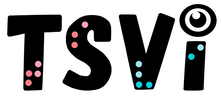- Home
-
Learn
- History of VI >
- Legislation & Laws >
- Vision Professionals >
-
VI Program Resources
>
- Program Printables
- Itinerant Teaching Tips
- Year at a Glance
- VI Program Handbook
- Caseload Analysis
- Organization & Time Management
- Professional Development
- Teacher Standards
- Professional Ethics
- Awards & Recognition
- APH Scholar Program
- Professional Organizations
- Certification Organizations
- Dealing with Challenges
- Professional Publications >
- Relatable Books for All Ages >
- Family Resources >
- Plan
- Basics
-
Teach
- Teaching Strategies >
-
Compensatory Skills Instruction
>
-
Social Skills
>
-
Self Determination
>
- Body Image & Acceptance
- Making Personal Goals
- My Vision Presentation
- My Self-Description
- Create a Personal Data Sheet
- Disclosure Decision
- Disability Statement
- Requesting Help
- Fighting Fears
- My Circle of Support
- Personal Responsibility
- Advocate for Safe Enviroments
- Having Picture Taken
- Coping with Change
- Aging Eyes
- Physical Characteristics
- Political Activism
- Laws Regarding Persons with Disabilities
-
Sensory Efficiency
>
-
Independent Living
>
- Orientation & Mobility Instruction >
- Recreation & Leisure >
-
Career & Vocation
>
-
Grow
- Complete Set Bonus >
-
Recorded Presentations
>
- Webinar: Tips for Being a "Physically Fit" TVI
- Webinar: The Art of Teaching the ECC
- Webinar: Virtual & F2F Strategies
- Webinar: Foundations of Teaching the ECC in the Age of Virtual Instruction
- Webinar: Itinerant Teaching Strategies
- Webinar: Using Themes to Teach the ECC
- Webinar: Conducting a FVLMA
- Webinar: Selecting the Right AT
- Webinar: Developing SMARTER Goals
- Webinar: Determining Service Intensity Using the VISSIT
- Webinar: Activities to Teach the ECC
- Webinar: Accessible Content for BLVI
- Webinar: Accommodations for VI
- Webinar: MIMO Strategies & Activities
- Webinar: SIDPID Strategies & Activities
- Webinar: Standard Course of Study Strategies & Activities
- Webinar: Job Tasks for Job, Career & Life
- Shop
- Jobs
Common Vocabulary in Eye ReportsBy: Carmen Willings
teachingvisuallyimpaired.com The vocabulary found in eye reports is just jargon to those unfamiliar with the terminology. Although not exhaustive, the following is a list of common vocabulary words that can be found in eye reports. Let me know if there are additional words you would like listed for quick reference! AccommodationThe ability of the eye to adjust its focus for seeing at different distances by changing the shape of the lens through action of the ciliary muscles. Occurs through a process of ciliary muscle contraction and zonular relaxation that causes the elastic-like lens to "round up" and increase its optical power.
Adventitiously BlindTerm used to describe someone that was sighted prior to becoming blind. It is a loss or impairment of vision that occurs after birth, usually as a result of an accident or disease.
Binocular VisionThe ability to see with both eyes at the same time. Blending of the separate images seen by each eye into one composite image. It results in three-dimensional perception.
BlindnessThe inability to see; the absence or severe reduction of vision. **Many people who meet the definition of blind still have some useable vision. **
Color BlindnessReduced ability to discriminate between colors, especially shades of red and green. Usually hereditary.
CongenitalA word describing any condition present at birth.
Congenitally BlindTerm used to describe someone who has been blind since birth.
ConvergenceThe movement, as an object approaches, of both eyes toward each other in an effort to maintain fusion of separate images.
Convex LensA lens that bends light rays inward and is used to correct hyperopia. It is also called a plus lens.
Doll's Eye PhenomenonAn automatic reaction that occurs during the first and second weeks of life. Rapid turning of the infant's head in a horizontal or vertical plane elicits a response of the child's eyes rotating to the opposite direction.
EnucleationThe surgical procedure consisting of removal of the entire eyeball.
EsophoriaA tendency of the eye to turn inward.
EsotropiaA form of strabismus in which one or both eyes deviate inward.
ExophoriaA tendency of the eye to turn outward.
ExotropiaA form of strabismus in which one or both eyes deviate outward.
Eye DominanceTendency of one eye to assume the major function of seeing, being assisted by the less dominant eye.
Field of VisionThe area of extent of physical space visible to an eye held in a fixed position. Its average extent is approximately 65 degrees upward (superior), 75 degrees downward (inferior), 60 degrees inward (nasal), and 95 degrees outward (temporal) when the eye is in the straight-forward position.
FloatersParticles that float in the vitreous and cast shadows on the retina; seen as spots, cobwebs, spiders, etc. It occurs normally with aging or with vitreous detachment, retinal tears, or inflammation.
Focal PointThe position on the principal axis of a lens system where parallel light rays are brought to a point focus.
Functional BlindnessCondition in which some useful vision may or may not be present but in which the individual uses tactile and auditory channels most effectively for learning.
FusionThe power of coordinating the images received by the two eyes into a single mental image.
HypertropiaThe upward deviation of one eye.
HypotropiaThe downward deviation of one eye.
In FocusAn object is in focus when it is being seen most clearly.
-itisA word ending meaning inflammation.
Legally BlindFor a student to be determined legally blind, the corrected vision in the student's better eye is determined to be worse than 20/200. There are different degrees of blindness. The range is from 20/200 after correction to “no light perception” or “nil”. A visual field no greater than 20 degrees in the better eye is also considered legally blind.
Light AdaptationPhysiologic process that adjusts the eye to bright light levels.
Low VisionLow vision describes a serious loss of vision that cannot be corrected by medical or surgical procedures, or with conventional eyeglasses. Eye care specialists describe low vision in terms of acuity and visual field. The only consistency in low vision is that there are many inconsistencies as conditions effect people in different ways.
MicrophthalmiaAn abnormally small eyeball.
Monocular VisionSight through one eye only, typically caused by injury or enucleation.
Night blindnessA condition in which visual acuity is diminished at night and in dim light.
Occlusion or PatchingWhere one eye is covered to develop the sight in the "lazy eye".
Partially SightedLimited sight which cannot be corrected by glasses or low vision aids. It is a term used to indicate visual acuity of 20/70 to 20/200 but also used to describe visual impairment in which usable vision is present.
Peripheral visionThe perception of objects, motion, or color outside the direct line of vision or by other than the central retina.
PhotocoagulationThe use of a laser to burn or destroy selected intraocular structures, such as intraocular tumors or abnormal blood vessels, and to create chorioretinal adhesions in retinal detachment surgery.
PhotophobiaLight sensitivity to an uncomfortable degree; usually symptomatic of other ocular disorders or diseases.
PigmentationThe color throughout something.
PresbyopiaA decrease in accommodative power (focusing at near) caused by the increasing inelasticity of the lens-ciliary muscle mechanism that occurs approximately anytime after the age of 40.
Prism lensesSpecial triangle-shaped lenses that are incorporated into regular eyeglasses, to redirect the rays of light entering the eye, resulting in a realignment of the eyes or, in some cases, a shifting of image to permit binocular vision.
Refraction/Refractive ErrorThe bending of light rays to focus on the retina. A refractive error is a condition such as myopia, hyperopia, and astigmatism, caused by corneal irregularities, in which parallel rays of light are not brought in focus on the retina because of a defect in the shape of the eyeball or the refractive media of the eye.
Spherical lensA lens that's shape is a segment of a sphere. A convex (plus) lens is thicker in the center and is used to correct hyperopia; a concave (minus) lens is used to correct myopia. Other types of spherical lenses are biconvex (when both surfaces curve outward), plano-convex (a single-sided curve), biconcave (both surfaces curing inward), and plano-concave (when only one surface curves inward).
StrabismusAn extrinsic muscle imbalance that causes misalignment of the eyes; includes exotropia, esotropia, hypertropia, and hypotropia.
Visual acuityThe sharpness of vision with respect to the ability to distinguish detail, often measured as the eye's ability to distinguish the details and shapes of objects at a designated distance; involves central (macular) vision.
|
History of Visual Impairments
Professional Practice
Vision Professionals
Professionalism
Teacher Resources
Professional Publications
VI Book Resources
Family Resources
VI Referrals
Medical vision exams
visual diagnosis
fvlma
|
|
Teaching Students with Visual Impairments LLC
All Rights Reserved |
- Home
-
Learn
- History of VI >
- Legislation & Laws >
- Vision Professionals >
-
VI Program Resources
>
- Program Printables
- Itinerant Teaching Tips
- Year at a Glance
- VI Program Handbook
- Caseload Analysis
- Organization & Time Management
- Professional Development
- Teacher Standards
- Professional Ethics
- Awards & Recognition
- APH Scholar Program
- Professional Organizations
- Certification Organizations
- Dealing with Challenges
- Professional Publications >
- Relatable Books for All Ages >
- Family Resources >
- Plan
- Basics
-
Teach
- Teaching Strategies >
-
Compensatory Skills Instruction
>
-
Social Skills
>
-
Self Determination
>
- Body Image & Acceptance
- Making Personal Goals
- My Vision Presentation
- My Self-Description
- Create a Personal Data Sheet
- Disclosure Decision
- Disability Statement
- Requesting Help
- Fighting Fears
- My Circle of Support
- Personal Responsibility
- Advocate for Safe Enviroments
- Having Picture Taken
- Coping with Change
- Aging Eyes
- Physical Characteristics
- Political Activism
- Laws Regarding Persons with Disabilities
-
Sensory Efficiency
>
-
Independent Living
>
- Orientation & Mobility Instruction >
- Recreation & Leisure >
-
Career & Vocation
>
-
Grow
- Complete Set Bonus >
-
Recorded Presentations
>
- Webinar: Tips for Being a "Physically Fit" TVI
- Webinar: The Art of Teaching the ECC
- Webinar: Virtual & F2F Strategies
- Webinar: Foundations of Teaching the ECC in the Age of Virtual Instruction
- Webinar: Itinerant Teaching Strategies
- Webinar: Using Themes to Teach the ECC
- Webinar: Conducting a FVLMA
- Webinar: Selecting the Right AT
- Webinar: Developing SMARTER Goals
- Webinar: Determining Service Intensity Using the VISSIT
- Webinar: Activities to Teach the ECC
- Webinar: Accessible Content for BLVI
- Webinar: Accommodations for VI
- Webinar: MIMO Strategies & Activities
- Webinar: SIDPID Strategies & Activities
- Webinar: Standard Course of Study Strategies & Activities
- Webinar: Job Tasks for Job, Career & Life
- Shop
- Jobs

